Why I Don’t Recommend Driving the Amalfi Coast (and other Italian travel mistakes)
Our first week exploring Southern Italy. Beautiful, bonkers, and occasionally terrifying.
There’s something about arriving in Naples that feels like being dropped into the middle of an argument you didn’t realise you were part of.
Everyone’s shouting, honking, gesturing wildly, and narrowly avoiding each other (cars, pedestrians, bikes), on the road.
Our Italian adventure began there, two sisters and a vague plan: history, coastline, good food, and the promise of a slower pace. (Spoiler: we got three out of four.)
Pizza, Pride & Perfect Coffee
We started gently with a hop-on-hop-off bus around Naples. It’s one of my favourite ways to get the lay of the land when I arrive somewhere new. You can see the city from a safe, elevated distance before being brave enough to walk into it.
From the top deck, Naples was glorious. Coastal views, pastel buildings clinging to cliffs, washing lines strung between balconies like festive bunting.
On the ground, however, Naples feels a bit run down and unkempt. The streets are cracked, the buildings faded, and the traffic appears to operate on a mix of instinct and divine intervention.
But there’s no mistaking the city’s character. This is one of the oldest continuously inhabited places in the world, with layers of Greek, Roman, and Spanish history baked into its foundations. And the people wear that heritage like a badge of honour.
Ask a local where they’re from and you’ll hear “Napoli” first, “Italy” second. There’s a fierce pride here, and a sense that Naples exists on its own terms.
The air hums with scooters, conversation, and the smell of pizza (which, of course, was born here), and the coffee is the best I’ve ever had!
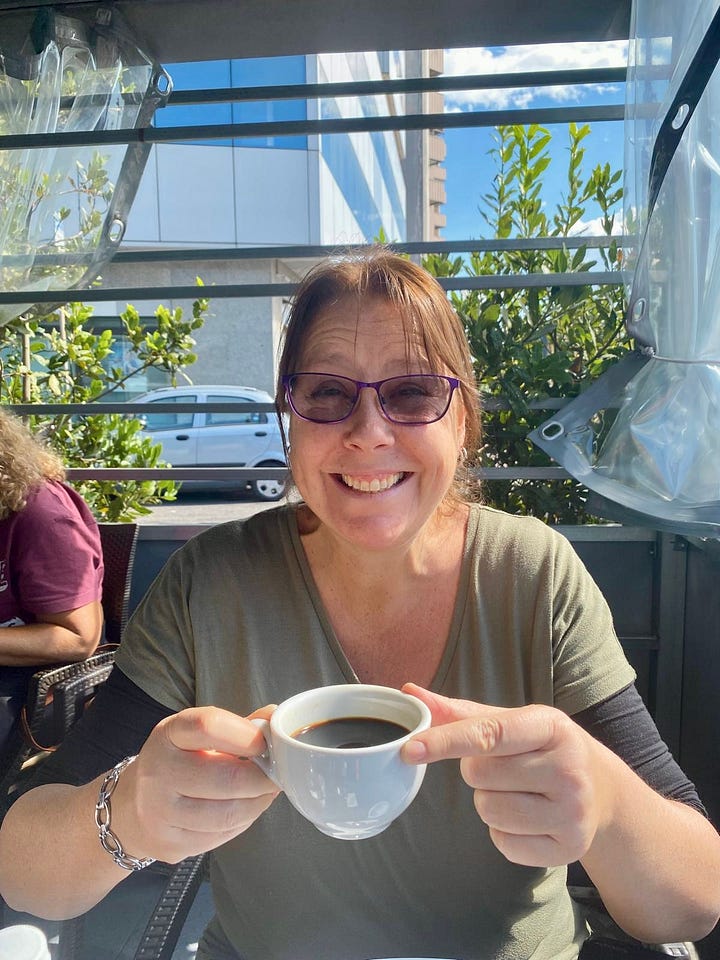

The €55 Tram Ride to Nowhere
Then came the tram.
In what can only be described as an amateur travel error, we hopped on without tickets, assuming we could buy them onboard.
We could not.
As we exited almost into the arms of 3 uniformed men flashing badges, we were fined €55. Each.
The irony? We were actually on our way to collect our hire car, which unfortunately never materialised.
We’d booked a small local company through Kayak, paying only a minimal deposit, and when we arrived, they cheerfully informed us they had no small cars left, only a luxury model that was four times the price! (Naughty)
We politely declined (after some muttering), and having already booked some nearby tours, decided to stay in Naples for two more nights.
Lost in Translation (and Platforms)
Getting anywhere from Naples, though, is an adventure in itself. The central train station could double as a psychological test.
Every time we thought we knew what platform we needed, someone would confidently tell us another. We’d wait patiently, then be redirected again, usually to the complete opposite end of the station.
It turns out there’s a reason for the madness. There are two types of train: the standard (cheap, cheerful, and leisurely) and the express (faster, fewer stops, and a few euros more). When you buy your ticket, they automatically sell you the basic one without mentioning the express even exists.
So if your schedule, Google maps, or ChatGPT, insists your train’s on platform 2, but the guard tells you platform 1, it’s because you bought the cheaper ticket. The express is over on platform 2, smugly leaving you behind.
Still, once you’ve navigated that little circus, the destinations make it all worthwhile.
When History Froze in Time
A short train ride takes you to one of the most remarkable archaeological regions in the world, where an ordinary August morning in AD 79 turned to catastrophe.
Mount Vesuvius, which had been quietly minding its own business for centuries, erupted with such force that it buried entire cities under ash, pumice, and volcanic gas.
Pompeii was smothered in layers up to six metres deep. Herculaneum, closer to the shore, was hit by a torrent of molten mud that solidified instantly, preserving everything in eerie detail.
Nearly two thousand years later, you can still wander the same streets, peer into ancient homes, and see frescoes, mosaics, and even bakery ovens that look ready to fire up again.
It’s haunting, fascinating, and quite beautiful. A glimpse into a world that ended in a single day.
History, Heat & Haunting Discoveries
First up: Herculaneum.
If you go, book a guide. Otherwise, it’s exactly as one reviewer put it — “a collection of rocks that looks vaguely important.”
With a guide, though, it becomes something else entirely. A haunting snapshot of a Roman town frozen in time. The discovery of 300 skeletons, huddled together by the shore, is particularly sobering.
It’s one thing to read about Mount Vesuvius. It’s quite another to stand metres from the volcano and realise just how quickly life changed for those people.
Pompeii, on the other hand, is spectacular. Streets, villas, frescoes, bakeries, even takeaway shops & wine bars! A full city beautifully preserved. You wander through it half in awe, half wondering how they managed such plumbing when my Airbnb shower can’t hold a steady temperature.
And hiking Vesuvius is surprisingly easy. You drive almost to the top, hop a shuttle for the final stretch, then hike twenty minutes to the crater. There’s coffee, wine, and souvenir stalls waiting at the summit, and the view across the Bay of Naples is breathtaking.
I did, however, find myself quietly thinking, “Who in their right mind buys or builds property in the shadow of this quiet patient beast!?”
Sorrento, Amalfi & the Art of Not Crashing
From Naples, we finally collected our rental car (a shiny MG3 Hybrid, bless Marco at Budget for the upgrade) and set off towards Sorrento, a coastal gem.
We stayed in Sant’ Agnello just a short walk away from the centre, & looking back I wished we’d stayed longer than one night.
It’s lively, charming, full of cafés and music and looks out to the ocean while being backed by majestic mountains. Definitely a sit back, drink coffee & watch the world go by kind of place.
However, keen to continue our journey, the following morning, fuelled by espresso and mild delusion, we took on the Amalfi Coast drive. Imagine hairpin bends clinging to cliff edges, local drivers flying past like rally champions, and me, crawling around corners at 20km/h with a conga line of cars behind.
I pulled over every time I could to let them pass, each time rewarded with the occasional appreciative toot, or perhaps not so appreciative, who knows.
I’m fairly sure Italians consider road markings mere decoration. Driving there requires equal parts bravery, flexibility, and prayer. My sister, bless her, provided the running commentary: “Careful, Jo! Oh my god, Jo! That bus isn’t stopping!”
The good news? We survived.
Positano is without doubt the view everyone associates with the Amalfi Coast. Vertical, colourful, absurdly photogenic and with stunning vistas out to the beautiful blue Mediterranean.
Amalfi itself, however, was a bit ordinary. Not the multi-coloured, sun-drenched postcard I’d imagined.
We stopped for a night in the rather chilly Ravello, perched high above Minori and the coast, then it was onwards through Maiori & Vietre Sul Mare to Salerno, our current stop.
However, given the chance to do this trip again I don’t recommend driving the Amalfi Coast, even as a seasoned European driver. You miss too much.
I would stay a few nights in Sorrento and boat hop between Positano, Praiano, Amalfi, Minori etc, eventually making my way over to Salerno where I could do more boat hopping and even ferry across to Capri, before maybe picking up a car in Salerno for onward travel.
Salerno: The Pause Before Sicily
Salerno, if I’m honest, isn’t the most thrilling city. Perfectly pleasant, but a little rough around the edges. We’ve been waiting out the rain here, hoping for clear skies for our boat trip along the Amalfi coast.
I know that driving through it only gave me half the picture. The real Amalfi magic is out there on the water, where we’ll be able to see the coastline in all its glory. (Pics to follow!)
In the meantime, we’ve been observing Italy’s quirks.
Toilets with no seats (why is that?). Bathroom basins with foot pedals. 1950s lifts big enough for one person, and wobbly enough for you to question your life choices, and coffee strong enough to power small machinery.
Still, there’s something beautifully human about Italy. It’s chaotic and confusing, but also deeply alive. Everyone talks with their hands. Cars double park with abandon. Strangers will yell at you one moment and help you the next.
And the Mediterranean?
If you ask me, it’s one of the most beautiful bodies of water on the planet. ❤️
Italy Tips from the Road
A few lessons for anyone following in our tyre tracks:
Book your tours with Get Your Guide. They’ve been brilliant, reliable, well organised, and easy to use.
Car hire tip: Pay for your rental in full and in advance through a reputable broker or directly with a well-known company. Sites like Kayak often only take a small deposit and leave the rest to be settled locally, which means the hire company can still wriggle out of your booking or hike the price when you arrive. Discover Cars, on the other hand, takes full payment upfront, which usually means your contract is locked in and the rental company has to honour it. Even so, I’d always stick with a trusted brand over a small independent unless you’re there in person and can check things yourself. We ended up using Budget, and it was worth every penny. Smooth pickup, friendly service, and no surprises.
Ask for an automatic. Unless you’re a seasoned European driver, it’s one less thing to worry about on those cliff roads.
Use Booking.com for accommodation. It’s hands down the best app I’ve found when travelling. Reliable listings, flexible cancellation, and usually the best prices. Almost everywhere here runs through it, from family-run guesthouses to seaside hotels.
Don’t assume you can buy tickets on trams — you can’t. Instead, download the Unico Campania app, the official ticketing system for Naples and the surrounding region. It lets you buy and validate tram, metro, and regional train tickets directly on your phone, which would have saved us that €60 fine if we’d known about it sooner.
Always carry a few tissues. Public toilets can be a bit light on loo paper, and you’ll thank yourself later.
Next Stop: Sicily (and Cannoli)
So next up for us (after our Amalfi boat trip) is Sicily!
We’ll be swapping the cliffs of Amalfi for ancient ruins, Greek temples, Roman theatres, and glorious landscapes that have inspired poets (and filmmakers) for centuries.
‘In Sicily, women are more dangerous than shotguns’
‘Leave the gun, take the cannoli!’
😂 Wish us luck!
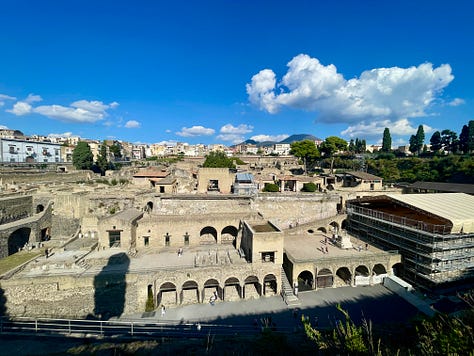
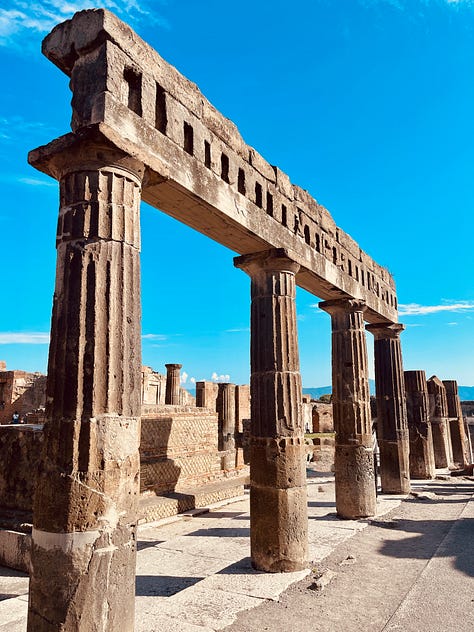
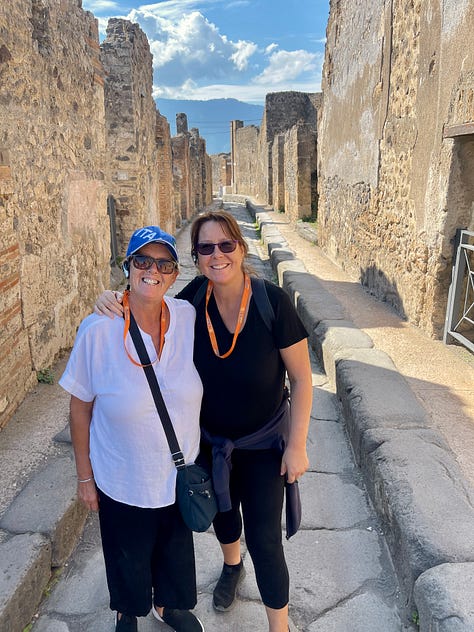
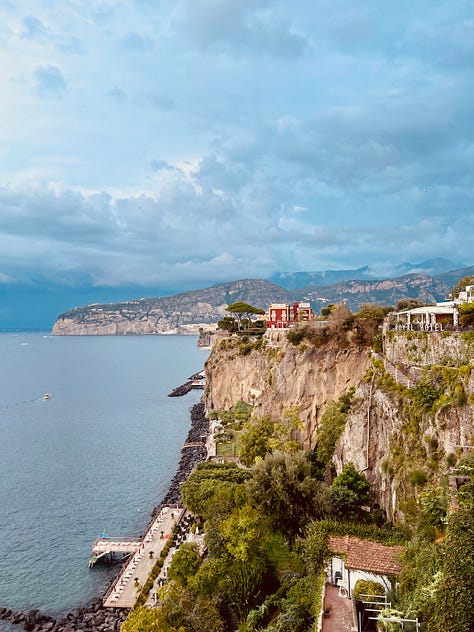

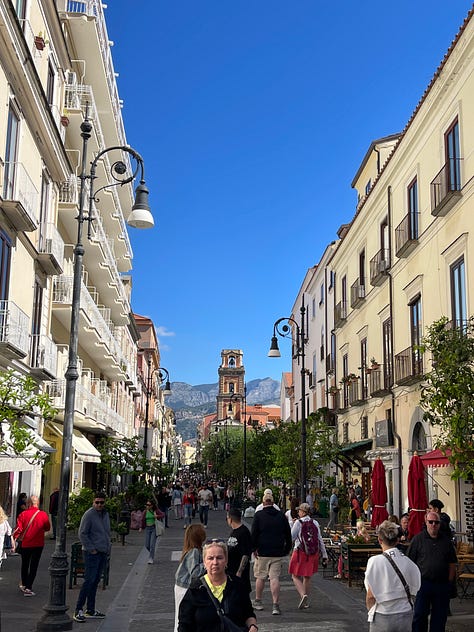

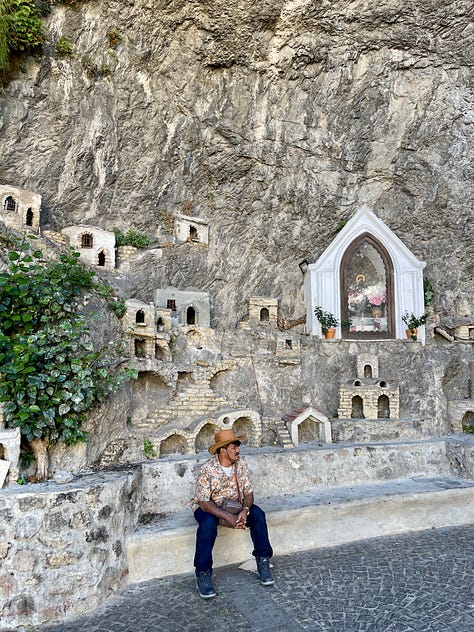






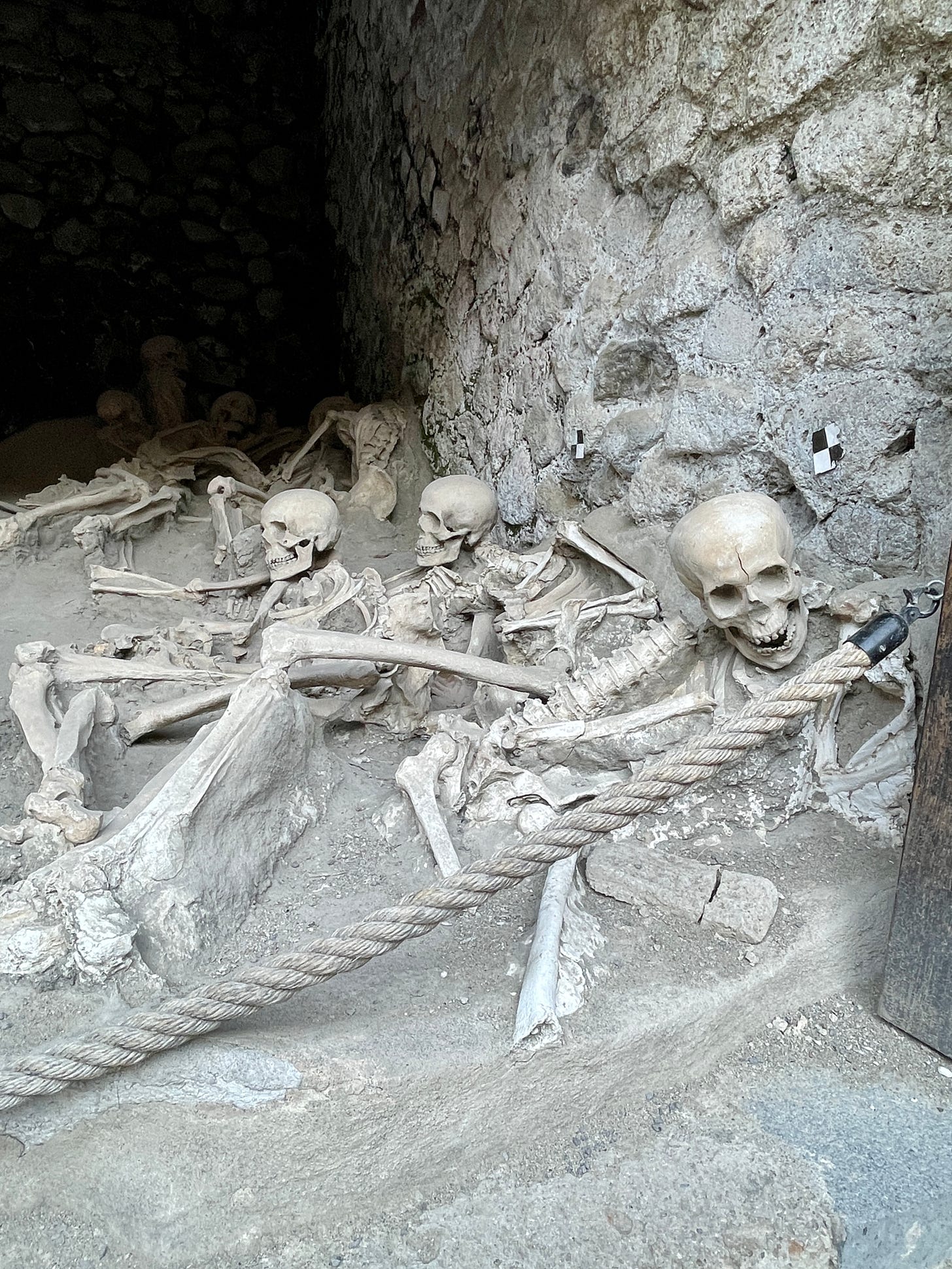

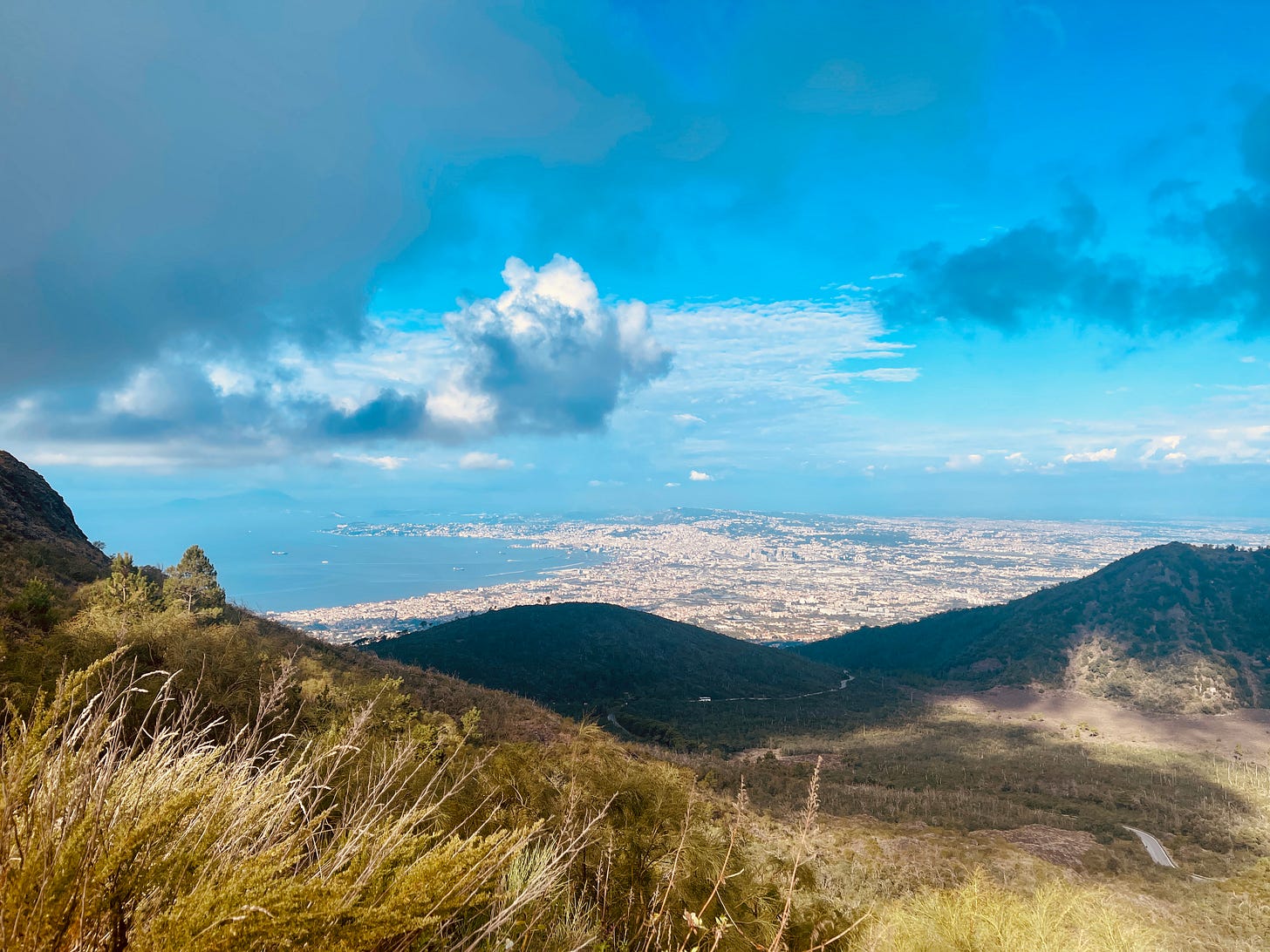
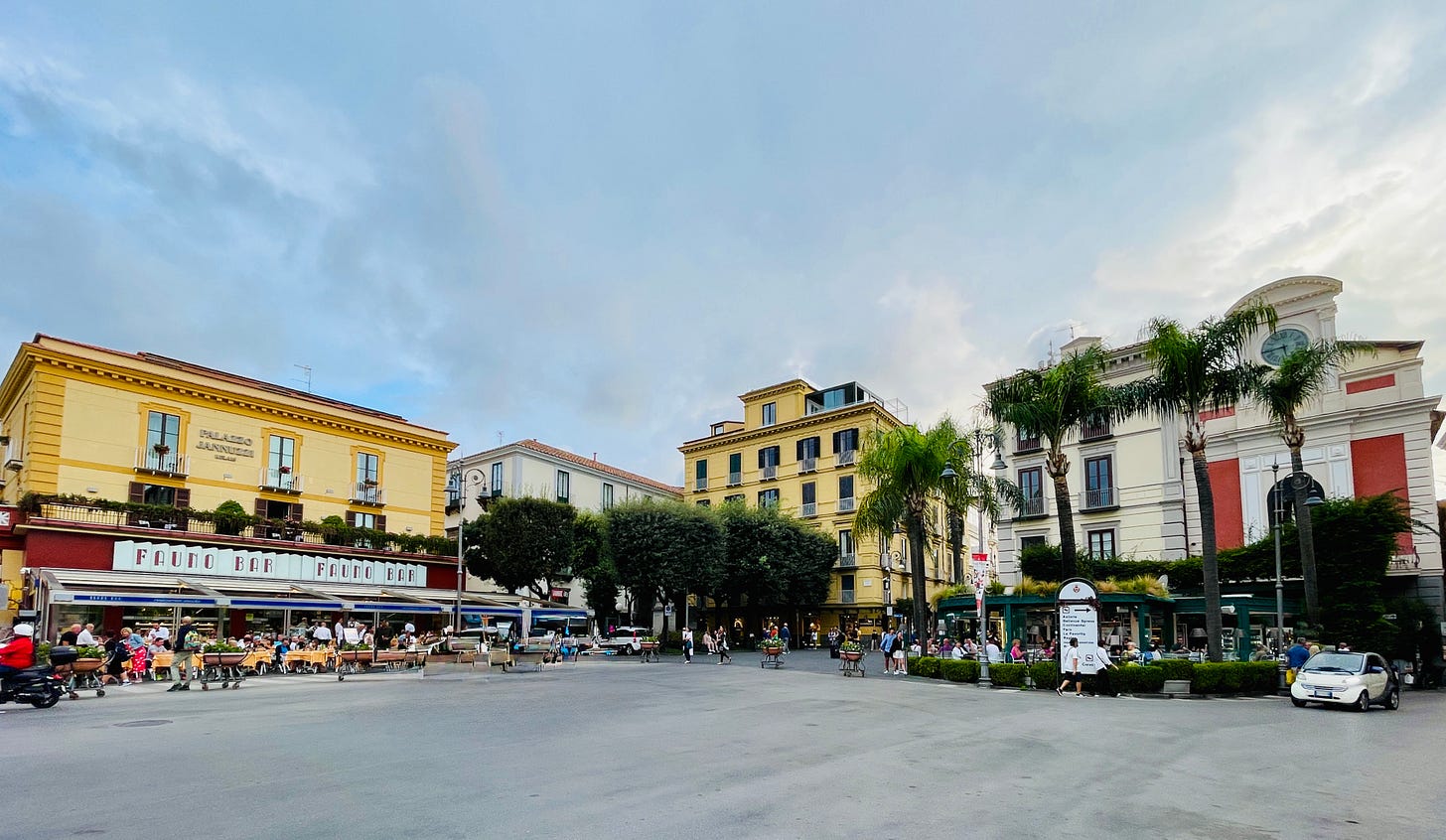

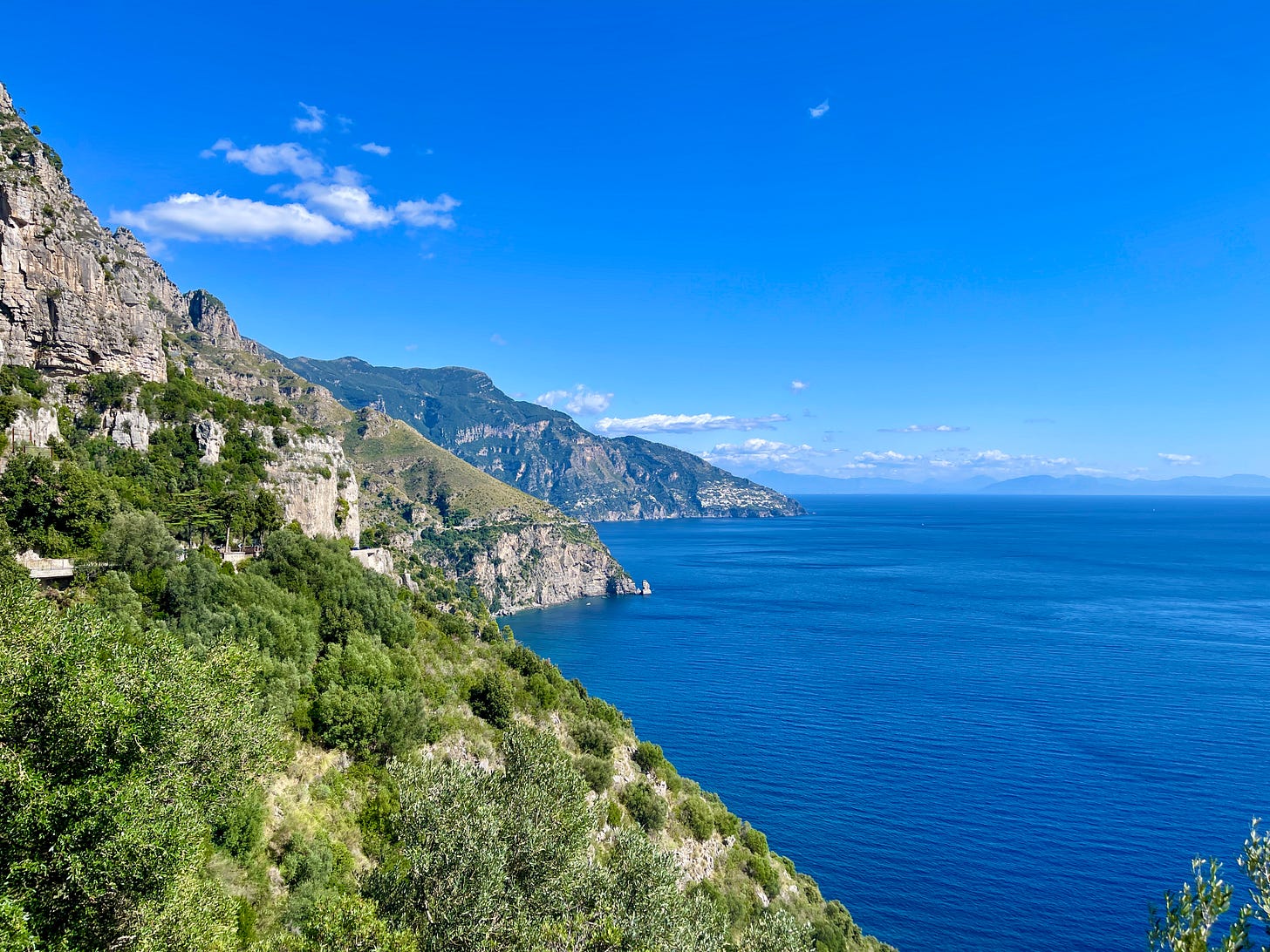
I loved reading about your adventures! Thanks for the tips!
Your writing jumps off the screen, and your humor could yield yet another income stream--stand-up, smart comedy. You describe places in bella Italia exactly as I've experienced them. Everything made me smile, laugh, and/or nod. Brava!